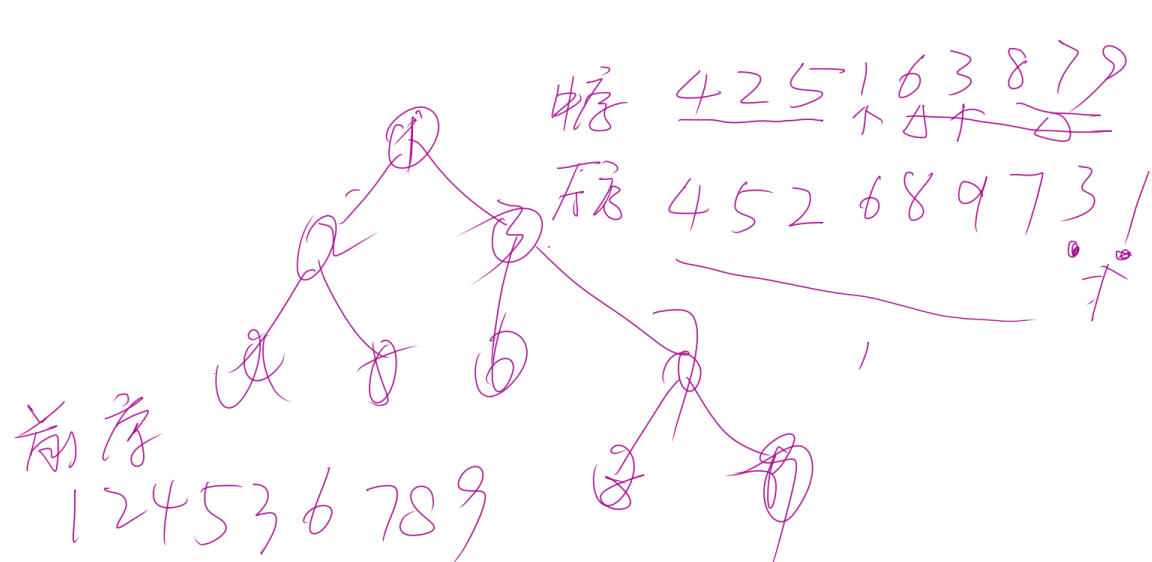思路
已知2种遍历方法,先构造出来二叉树,再用遍历函数遍历即可。
一次构造并打印需要的遍历,难度较高,不如分拆简单。
后序遍历从后往前遍历,“根右左”的顺序
2个不同的root
在build函数中,第一个root是从post或pre中获得。第2个root是作为返回值的root。这2个root的区别是,第1个root是第2个root的父节点。
已知中序,前序构造二叉树,输出后序
#include <cstdio>
#include <map>
using namespace std;
const int N=1e6+10;
int pre[N],in[N],n;
int l[N],r[N],p=1;
map<int,int> mp;
void post(int root){
if(!root) return;
if(l[root]) post(l[root]);
if(r[root]) post(r[root]);
printf("%d",root);
}
int build(int left,int right){
if(left>right) return 0;
int root=pre[p++];//第1个root
int i=mp[root];
l[root]=build(left,i-1);
r[root]=build(i+1,right);
return root;//第2个root作为第1个root的子节点返回
}
int main(){
scanf("%d",&n);
for(int i=1;i<=n;i++){//中序
scanf("%d",&in[i]);
}
for(int i=1;i<=n;i++){//前序
scanf("%d",&pre[i]);
}
for(int i=1;i<=n;i++){//映射
mp[in[i]]=i;
}
build(1,n);//构造
post(1);//后序打印
return 0;
}
已知中序,后序构造二叉树,输出前序
#include <cstdio>
#include <map>
using namespace std;
const int N=1e6+10;
int in[N],post[N],n;//存入中序,前序
int l[N],r[N],p;//构造二叉树
map<int,int> mp;
void pre(int root){//前序遍历
if(root==0) return;
printf("%d",root);
if(l[root]!=0) pre(l[root]);
if(r[root]!=0) pre(r[root]);
}
//构造出二叉树,再用pre输出一遍
int build(int left,int right){
if(left>right) return 0;
int root=post[p];
int i=mp[root];
p--;
//递归的目的是把当前root放到正确的位置上
r[root]=build(i+1,right);
l[root]=build(left,i-1);
return root;
}
int main(){
scanf("%d",&n);
p=n;
for(int i=1;i<=n;i++){
scanf("%d",&in[i]);
}
for(int i=1;i<=n;i++){
scanf("%d",&post[i]);
}
for(int i=1;i<=n;i++){
mp[in[i]]=i;
}
build(1,n);
pre(1);
printf("\n");
return 0;
}
样例输入输出
输入:
9
4 2 5 1 6 3 8 7 9 //中序
4 5 2 6 8 9 7 3 1 //后序
输出:
124536789 //前序


